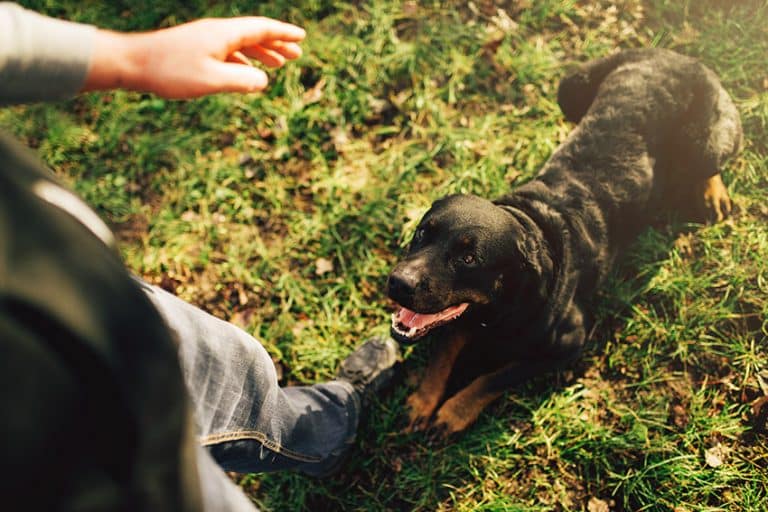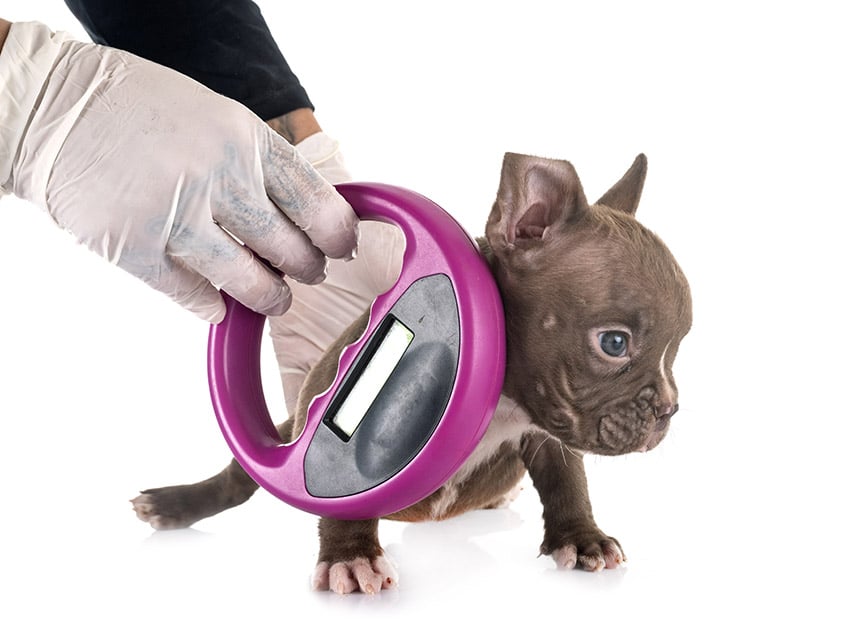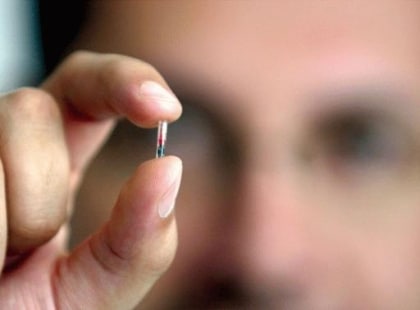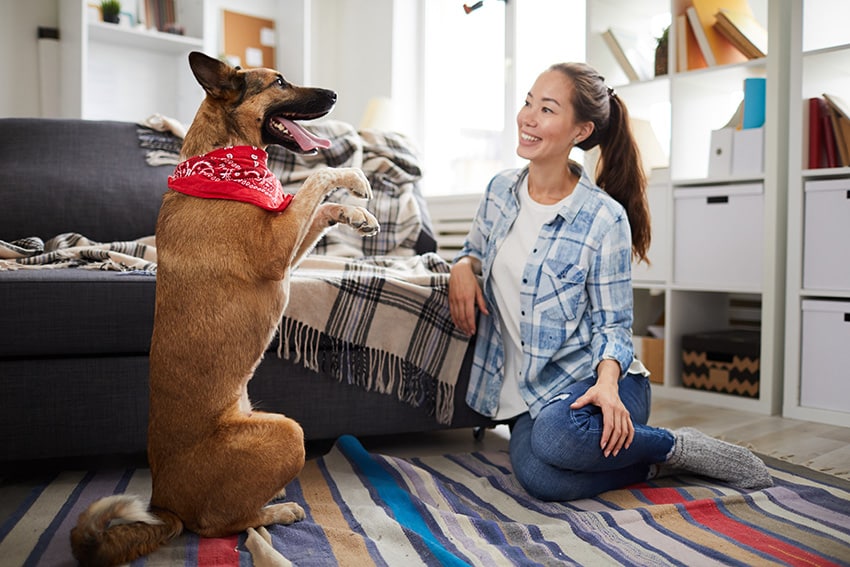- 86-97% were found - that’s great news!
- 38-59% were recovered in the neighborhood
- 13-29% of missing dogs came home
- 9-23% were reunited with furry friends thanks to an ID tag or a microchip
- Only 2-12% were rediscovered at the local shelter
- What is a Dog Microchip?
- 10 Benefits Of Microchipping Your Dog
- Side effects
- The Cost
- Microchip misconceptions
- Pick the right Microchip for your dog
- Microchipping your dog : A Quick & Simple Procedure
- Dog microchip registration
- Dog Microchip Lookup
- Dog Microchip Scanners
- Scanning A Dog For A Microchip
- Databases
- Finding Your Lost Dog
- 4 Inspiring Stories of Lost and Found
Microchip Information privacy
Keeping the microchip functional
- If you notice any inflammation, swelling, or drainage near the injection site, call your veterinarian.
- Have your veterinarian scan the chip at Fido’s annual checkup to make sure it’s functioning properly.
- Register with the dog microchip registry and update your data any time your address or other contact information changes.
The durability of a microchip
- The collar and ID tag can break, fall off, or fade over time. A microchip offers permanent identification that will never be lost.
- They increase the chance that you and Fido will be reunited if you lose him. Studies demonstrate that dogs with a microchip are 2.5 times more likely to find their way home.
- Chips should last for your pup’s lifetime.
- Since veterinary clinics and shelters scan for microchips when a lost dog arrives at their facility, you’re more likely to get your furry friend home sooner with a chip. This is especially important if Fido is on any vital medications.
- Microchips make it easier to locate your four-footed friend after a natural disaster such as flooding, tornadoes, or an earthquake.
- A microchip can serve as legal proof of ownership if your pet is stolen or lost.
- It’s quick, convenient, and fairly inexpensive to microchip your pal. Your veterinarian can do it as part of a routine exam, and it will just feel like one more vaccination to Fido.
- With the national registries, you can track your pup down even if he crosses over state lines.
- With an ISO compliant microchip, your pup is also protected if you travel overseas with him.
- No chip maintenance is required.
- Temporary bleeding at the injection site
- Abscesses or swelling around the microchip
- Hair loss
- Microchip migration to other sites in the body
- Tumors
- Paralysis from improper chip placement because the patient was struggling

You may also be able to reduce your costs by purchasing a kit from Amazon and bringing it to your veterinarian during Fido’s annual checkup. There are options available from HomeAgain, Pro-ID (registration fee not included), Animal ID (comes in a 20-pack – this would be a great deal if you’re involved in dog rescue!), and others.
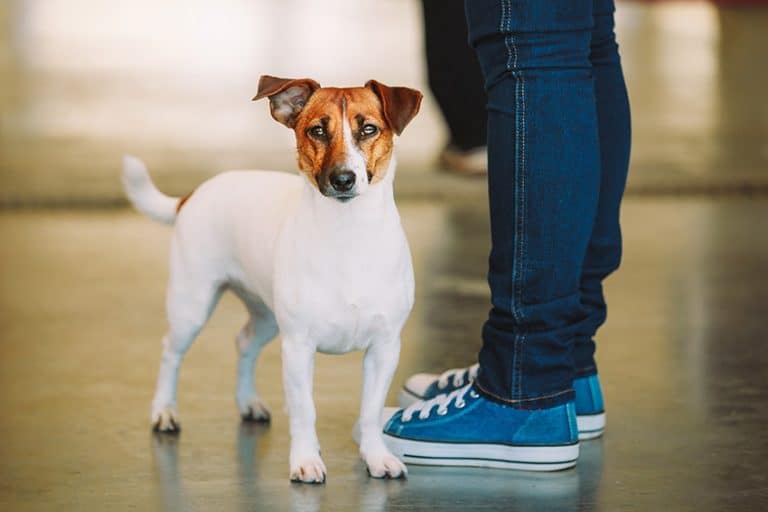
It Won’t Tell You Your Dog’s Location
Dog Microchip VS. GPS Tracker
- A GPS tracker provides live-time tracking of your pet’s whereabouts while a microchip’s only job is to transmit the identification number when a scanner activates it. In other words, the chip is useful once your pup is found.
- A GPS requires a battery or power source to function and is always active. The microchip is a radio frequency identification device, and it does not require any power.
- The GPS tracker is larger and external. It cannot be implanted, so there is a risk that it can come off. A pet microchip is about the size of a grain of rice, and it is implanted under the skin. There is no risk of it falling off your dog.
- GPS tracker systems require a subscription to be useful. There is no subscription for a microchip. However, some registries do charge a fee to maintain your contact information.
- The GPS tracker is transferable to another dog, but a microchip is not.
It Doesn’t Contain Your Dog’s Health Information
Microchip isn't a replacement for ID tag
- A collar with an ID tag is quicker and more convenient than the microchip. Anyone who finds Fido will know he belongs to you and how to reach you as long as the information is up to date. But if the tag falls off or your pooch slips his collar, he’ll still have the microchip.
- The rabies tag alerts people that your pup has been vaccinated. It also has a serial number that can be used to trace Fido back to you. However, if the veterinary clinic or county office that issued the tag is closed for the day, there can be delays. The microchip databases are always accessible.
- Ask about the warranty and company history. Have they been in business for several years? Is there a lifetime guarantee?
- Does the ID number start with a unique 3-digit number or a shared code (900)? Unique numbers will be easier to track.
- Does the company have a physical address and database for the registry? When you’re trying to track down a missing pal, it helps to have a live person to talk to.
- You want to know whether the microchip complies with ISO standards. There’s more information about this below.

Microchip considerations for International travel

- Bring a scanner with you that will read your pup’s microchip.
- Contact the Veterinary Officials at your port of destination in the EU to see if they have a universal scanner that can read the device.
- Allow a USDA Accredited Veterinarian to implant an ISO compatible microchip and report the number and implant dates for both devices on the EU Health Certificate.
Can You Microchip a Dog Twice? Yes. The chips will not interfere with each other. A microchip has a transponder that’s activated only when a scanner that’s tuned to read its frequency passes over it.
Locating the microchip on your dog
Removing Microchip From My Dog

- Get the microchip number - When you have the device implanted, be sure to get the number from your veterinarian. They may include it on your paperwork from the visit. If you don’t have it, you should be able to call the facility or clinic where the procedure was done and have them look it up for you.
- Get the microchip type or brand - There are several manufacturers of pet microchips in the United States. You will need the brand for the national registry so that your information can be effectively traced if needed. The implanter should have this information, if not, go to the AAHA Universal Pet Microchip Lookup and enter the chip number to discover the possible brands.
- Go to the national database registry or another registry such as the Free Pet Microchip Registry and enter the microchip information along with your contact information. Update your personal data whenever you move or change your phone/email. You should also register directly with the chip manufacturer.
National Pet Microchip Registration Database
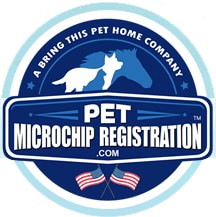
International Companion Animal Microchip Search Tool


What if you travel abroad with your special pal? Is there a way to find Fido if he runs away in another country? PetMaxx is an international search tool for companion animal microchips. This tool searches databases in different countries to help reunite a missing pet with the owner. For the United States, PetMaxx searches the PetLink database, which is another service where you can register any brand of microchip.
If you find a lost dog, you might wonder what you should do next.
You should call your veterinarian or the local shelter to see if they have a microchip scanner to check for a transmitter.
If the scan gives you a chip ID and manufacturer, check the databases to see if the pup’s owner registered the transmitter. Refer to information below about look-up tools and registries.

The American Animal Hospital Association (AAHA) offers a Universal Pet Microchip Lookup. When someone at a shelter or veterinary clinic scans a lost pooch and finds a microchip ID, they can enter the number at this site.
The microchip lookup is not another registry but an internet-based application. It will search the registry databases of participating companies for an ID match. If it finds the matching number, the service will provide information about which registry to contact.
The Difference Between a Universal Scanner and a Standard Scanner
Examples of microchip scanners include:
- HomeAgain Plus Universal Pet Microchip Reader - This device can read all brands or frequencies of microchips and is portable. It has a wall adapter and rechargeable NiMH battery to power the scanner. The product includes a carrying case. Learn more about it here.
- Halo Pet Microchip Reader Scanner - The Halo Scanner can read most pet microchips with the exception of the Avid chip and the AKC/Trovan chip. It is a portable device with a lithium battery that is rechargeable via USB. Read more about this product here.
- Manruta 134.2 kHz Pet ID Microchip Scanner - The Manruta scanner will read most 10 or 15 digit microchips but can only identify the presence of the Avid Friendchip. The product includes a USB charging cable and a gift bag. It has a reading range of 5-10 cm. You can find more information here.
Microchip scanner for personal use
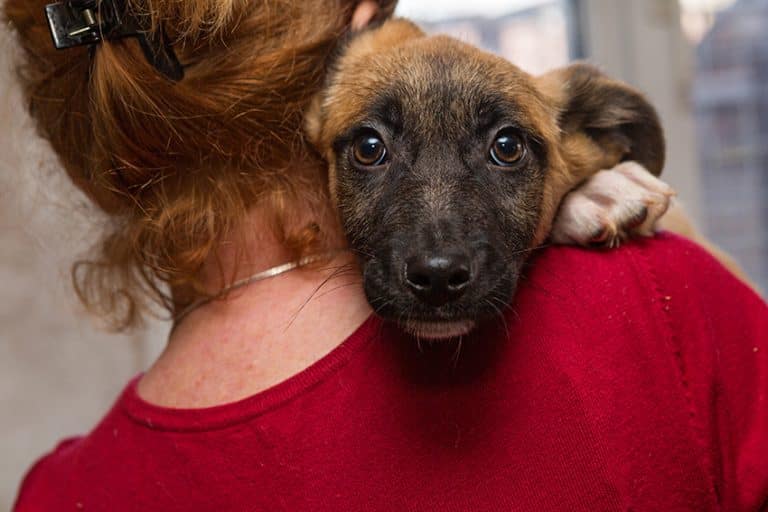
Pre-Scan Preparations
Scanning Technique
- Scan slowly and methodically. Depending on Fido’s size, it should take 10-20 seconds to check for a microchip.
- Start between the shoulder blades and scan in a serpentine pattern from head to tail. Go very slowly,about ½ foot per second. Try to gently rock the scanner back and forth as you go.
- Keep the scanner close to Fido by either lightly touching the skin/coat or hovering just above.
- If you don’t find a microchip in the expected place, rotate the reader 90 degrees and scan again.
- Next, you can slowly scan other parts of the body, by checking down the sides of the legs, the neck, under the chest, and behind the front legs.
- If you still can’t find a chip, let another person scan. Sometimes a second person can find a device that was missed on the first run.
AAHA Lookup compatible databases
- 24PetWatch Pet Protection Services
- 911PetChip & Free Pet Chip Registry
- ACA MARRS
- AKC Reunite
- BC Pet Registry
- BeKind PetFind
- BuddyID™
- EIDAP
- Found Animals
- Furreka
- HomeAgain
- Homeward Bound Pet
- Identrac Inc.
- InfoPET
- International Pet Registry
- Microchip I.D. Solutions
- Nanochip ID Inc.
- National Animal Identification Center
- Peeva
- PetKey
- PetLink
- Petstablished
- Prime Trackr
- Save This Life
- SmartTag Microchip

Keep your contact information up to date
Be Proactive
Call Shelters and Veterinary Clinics in the Area
Wait For the Manufacturer to Contact You
Reasons Why Your Dog's Microchip Might Not Work
- The microchip migrated to another location in the body and is out of the range of the scanner.
- Interference from excess body fat, matted hair, or metal on Fido’s collar if it’s too close to the chip. The last one can be avoided by removing the collar prior to scanning.
- Improper scanning technique
- The scanner is not set to the same frequency as the implanted microchip
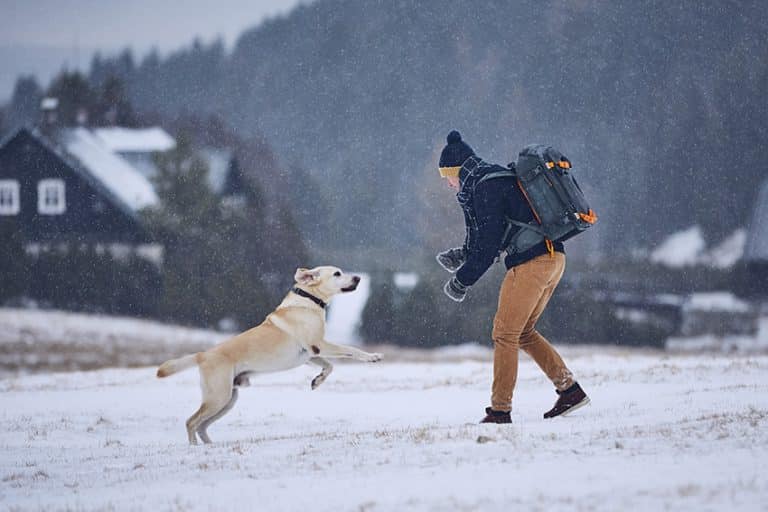
Jacksonville Family Reunited With Lost Dog by Chance
A family in Jacksonville came to a Humane Society adoption event at a local Pet Smart to adopt a kitten. While they were standing in line, the father noticed one of the workers leashing a brown and white dog to take him for a walk. He immediately recognized, “Dopey” and called out the pup’s name.
Microchip Reunites Pup and Family After 12 Years
Couple Reunited With Yorkie After 6 Years
Microchip Helps Owner Find Pup That Wandered Off After Storms
Final Thoughts
